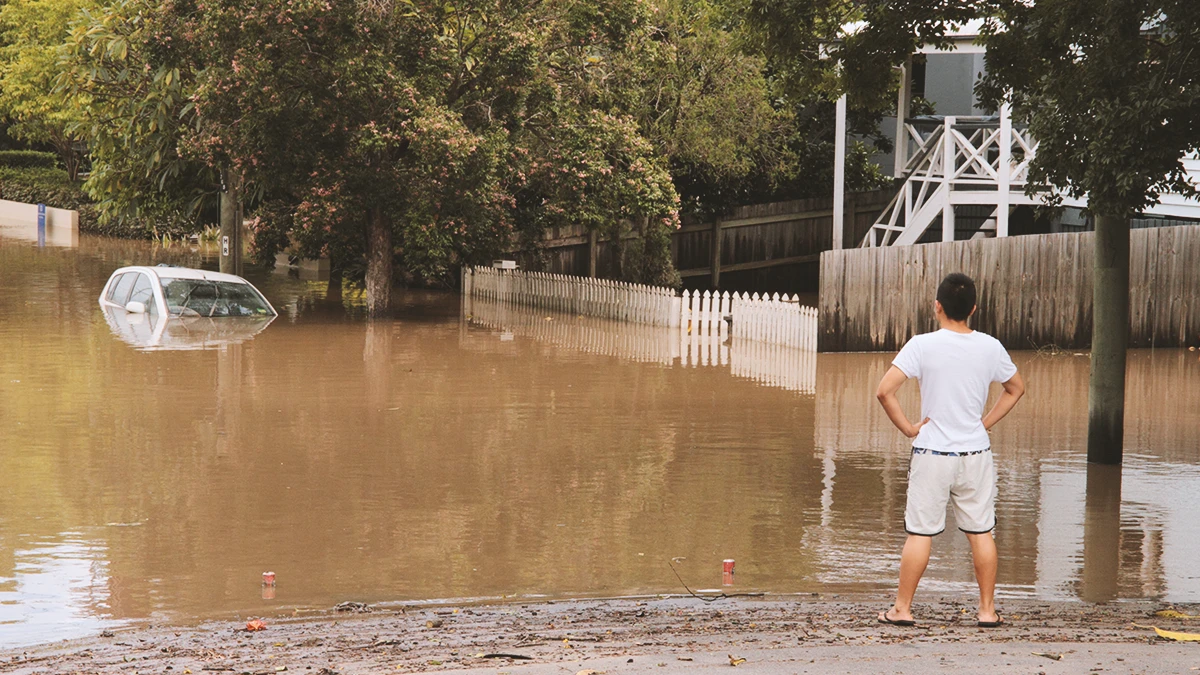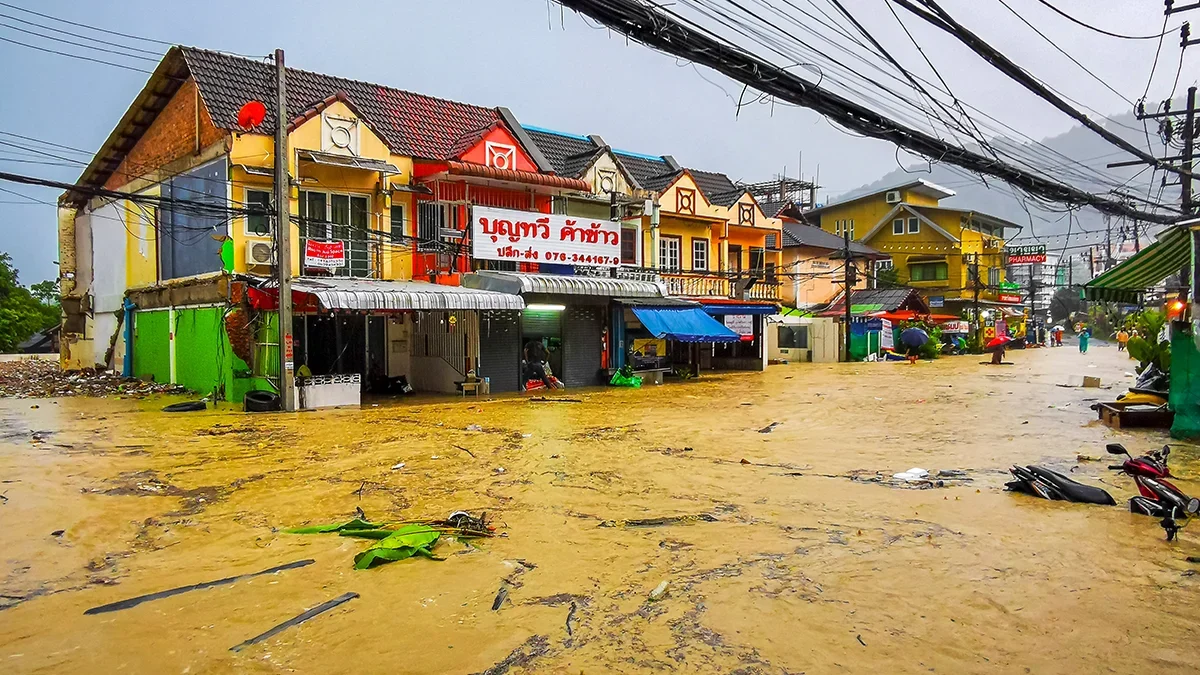(Re)in Summary
• Geoscience Australia’s updated AR&R guidelines recommend adjusting historical flood data to account for climate change impacts, providing specific scaling factors for different regions.
• Short-duration rainfall extremes are now estimated to increase by 15% per degree of warming, three times higher than previous estimates
• Smaller catchments may show higher sensitivity to these changes, potentially leading to larger shifts in extreme event estimations.
• Experts have differing views on the exact impact on insurance underwriting or premiums, but agree that the updates are crucial for accurate flood risk assessments and infrastructure planning and long overdue.
There are different perspectives on how Geoscience Australia’s updated Australian Rainfall & Runoff (AR&R) guidelines might impact insurance underwriting and rates, but experts agree the changes have been urgently needed.
The new AR&R guidelines state that historical flood data must now be adjusted to account for the impacts of climate change and rising global temperatures and provide specific scaling factors to adjust flood estimation curves, while noting differences in projected changes across different parts of Australia.
“The new climate change considerations in ARR are a much needed update to previous interim guidance,” says Tom Mortlock, Aon’s Climate Risk Advisory Lead for Asia Pacific.
Recommendations dating back to 2014 suggest applying a standard Clausius-Clapeyron (CC) relationship of 5% increase in rainfall extremes per degree global warming, which were substantially increased in current guidelines, Mortlock adds.
“For short-duration rainfall extremes, the central estimate is now three times larger than before, 15% per degree of warming,” says Mortlock.

Tom Mortlock
APAC Climate Risk Advisory Lead at AonThe Clausius-Clapeyron equation dictates a relationship between temperature and atmospheric water vapour — crucial for determining global warming and impact on rainfall patterns.
“This is in line with observations in Australia where we see the frequency of short duration rainfall extremes, those responsible for flash flooding, increasing at a much greater rate than multi-day rainfall extremes, which are more relevant for riverine flooding,” Mortlock says.
Current flood Intensity-Frequency-Duration (IFD) curves are based on rainfall gauge observations and already implicitly account for warming that has already occurred.
“The reason we cannot use these static IFD curves for future applications is because as the climate continues to warm, so does the IFD relationship under a warmer climate,” Mortlock adds.

Peter Uhe
Principal Scientific Developer at FathomChanging IFD flood curves to account for warming is already common practice at flood risk intelligence company Fathom, says its Principal Scientific Developer Peter Uhe.
“Flood risk assessments will need to be based upon the scientific understanding of increasing extreme rainfall and flooding. This will have follow-on effects for property insurance, where this risk is not already taken into account,” says Uhe. “This guidance reflects that climate change is a problem in the present day, not just for the future.”
A range of flood risk drivers like extreme rainfall and antecedent conditions scale with temperatures, says Alexander Pui, Adjunct Fellow at the University of New South Wales’s Climate Change Research Centre. “Hence, any calibration of models to historic data needs to account for these changes.”
The new AR&R guidelines rely on global rather than local temperature changes to inform the scaling factors, which means that there should be less variation compared to other approaches that take localised temperature and other factors across different areas in Australia, Pui explains.
However, smaller catchments will show slightly higher sensitivity, and thus, applying the new guidance could mean larger shifts in the tail, such as in 1-in-100-year return period events, depending on the shape of the flood frequency curve.
Peter Uhe
Principal Scientific Developer at FathomBuilding resilience
Mortlock says that “Forward-looking” climate change projections are typically not included in risk-based pricing for premiums and he says the new AR&R guidance will not directly impact underwriting. “However, it will affect the planning and design of critical flood infrastructure by government, such as levees, where the design lives are long and the failure tolerance is low.”
Tom Mortlock
APAC Climate Risk Advisory Lead at AonHowever, including new guidance into risk-based assessments at the next renewal could worsen home insurance affordability, says Pui, at a time where 15% of all Australian households are considered ‘affordability stressed’ when it comes to home insurance.
“There is often a significant lag between scientific discovery and industry practice, but if insurers incorporate the new approach into flood risk assessment to inform underwriting decisions at the next major renewal, it could further exacerbate the current uninsurability and unaffordability issue,” Pui added.

Alexander Pui
Adjunct Fellow at the UNSW’s Climate Change Research CentreHowever, if new climate-informed design standards are broadly supported by authorities and adopted by practitioners, it would lead to more resilient infrastructure and a more sustainable insurance market, Pui adds. “Underwriting is not an exact science, and has always been about making decisions under great uncertainty — particularly when insurance has been about providing value by smoothing of volatile tail risk.”
The supply of insurance capacity can still be maintained to some degree despite growth in underlying technical flood risk, says Pui, adding that Underwriters do have other tools at their disposal, such as parametric solutions, accumulation control and direct engagement with large corporate clients and local government. “(The changes) also prompt thinking creatively around adaptive measures in light of rapidly emerging new data and science.”
Alexander Pui
Adjunct Fellow at the UNSW’s Climate Change Research CentreUltimately, the new flood estimation guidelines, while a fantastic resource, will still have to account for regional uncertainty, Mortlock says. “The IFDs, however, are only as good as the observations that they are built off,” he adds.
In areas where topology is complex and orographic effects impact local behaviour of rain extremes, like in the Illawarra, local modification of AR&R flood curves may be needed, says Mortlock. “It is important that anyone using the IFD tables understands the data and approaches used to derive these, and the regional uncertainties that may exist.”














